In pictures: 25 years of Hubble
- Published
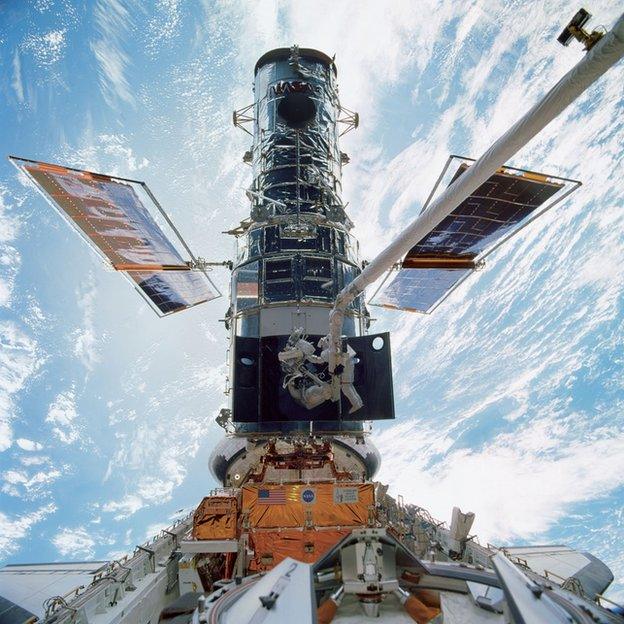
The space shuttle Discovery carried the US-European Hubble Space Telescope (HST) into orbit on 24 April 1990, opening a new era in the history of astronomy.
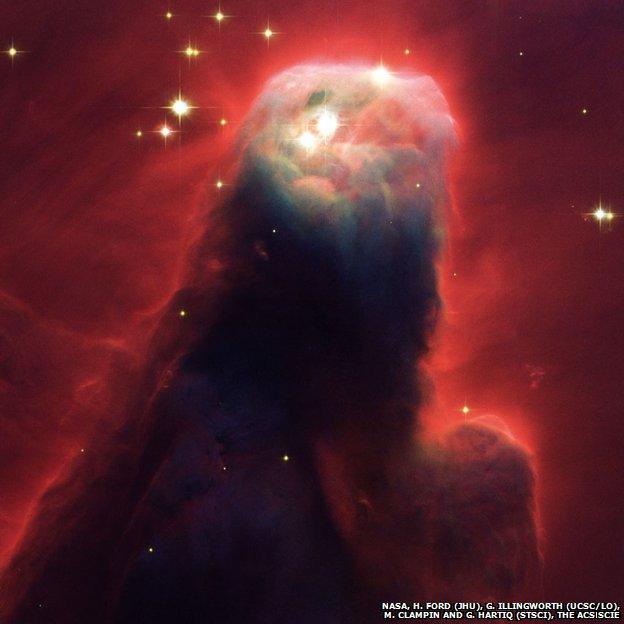
An initial problem with one of its mirrors was eventually fixed in 1993. Since then, the HST has provided astronomers with pictures of unrivalled quality, made possible by it being above the Earth's atmosphere.
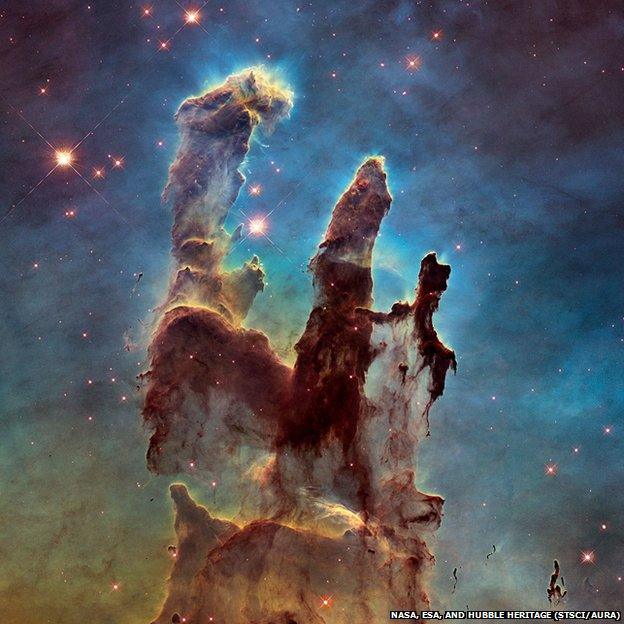
Yet it is not just astronomers who are fascinated by Hubble's pictures, the sheer beauty of images such as this one of the Eagle Nebula have drawn a wide audience.
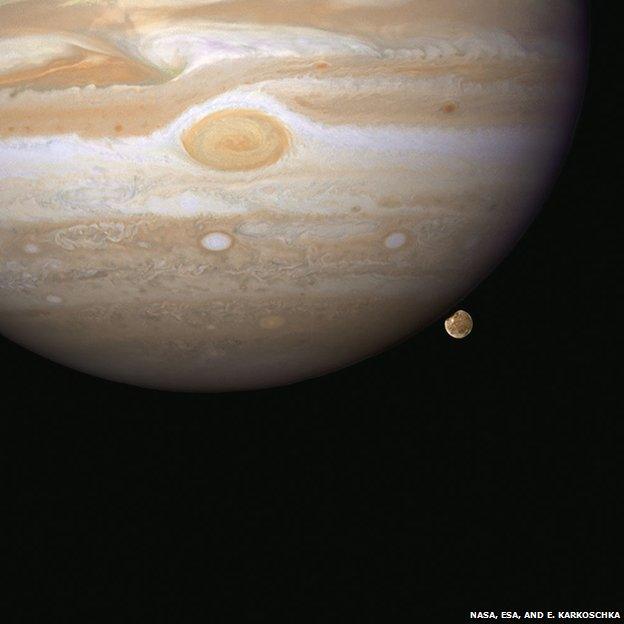
Pictures such as this one of Jupiter and one of its moons, Ganymede, are captured over a distance of more than 440 million miles (708 million km).
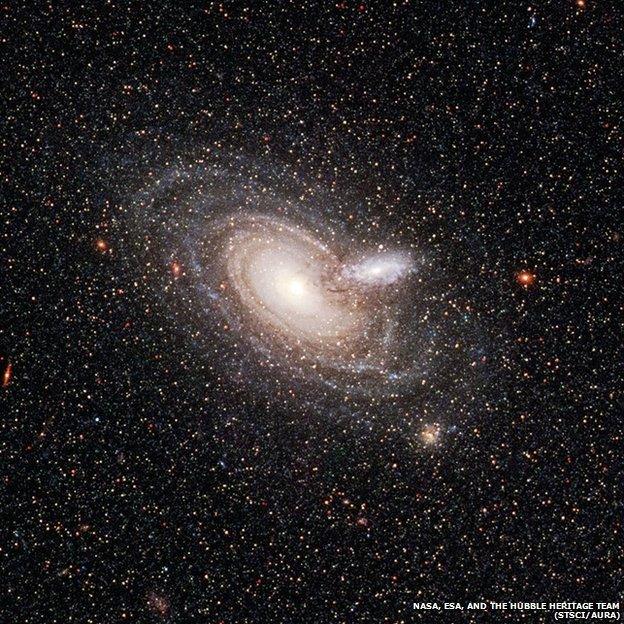
Hubble also helped astronomers calculate the age of the Universe, which is about 13.7 billion years old.
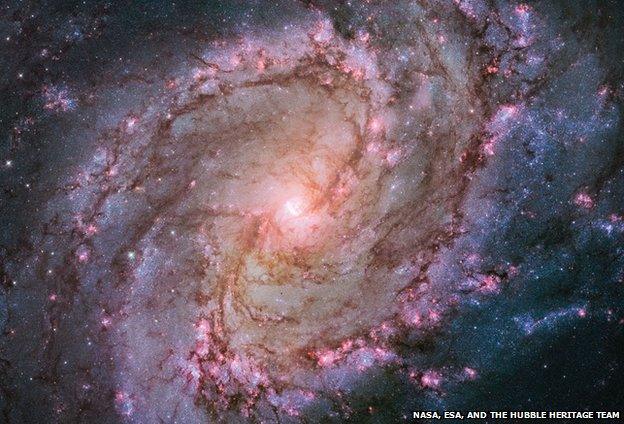
Hubble underwent a number of upgrades and was last serviced in 2009.
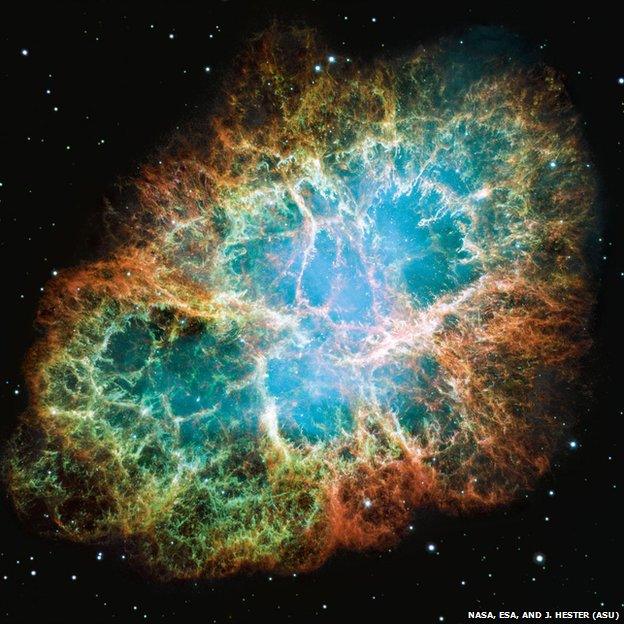
The M1 Crab Nebula is 6,500 light years from Earth.
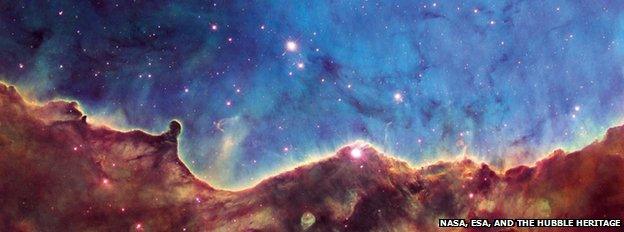
Speaking on the 20th anniversary of Hubble, the then president of the Royal Astronomical Society, Andy Fabian, said it had helped to usher in a "golden age" in astronomy.

Scientists have said recently that they have every hope that the Hubble Space Telescope will keep working for at least another five years, though its successor, the James Webb Space Telescope (JWST), is due for launch in 2018.

Expanding Universe: Photographs from the Hubble Space Telescope is published by Taschen.